After countless sleepless nights, no time with your family, declined party invites….something special came into this world:
Your product! Your baby.
That was actually the easy part. Next comes selling it.
Ah selling. The 7-letter word that strikes terror into the hearts of many business owners.
But you know who really has it tough? The Donald Drapers of this world who work in industries where they have to meet with every single prospect and drink and charm their way to closing the deal.
If you sell your product online, you don’t have to meet your prospects at all. Nor would you have to wipe the sweat off your hands after catching a flicker of doubt in their eyes.
You can sell in your underwear. While you’re sleeping. While you’re out having fun.
How? By selling to your email list through a sales email sequence. The secret weapon powering all of the most successful online product sales and launches.
Ry Schwartz from Copy Hackers recently generated $500K for Amy Porterfield by sending out a few emails inviting her subscribers to attend her webinars:
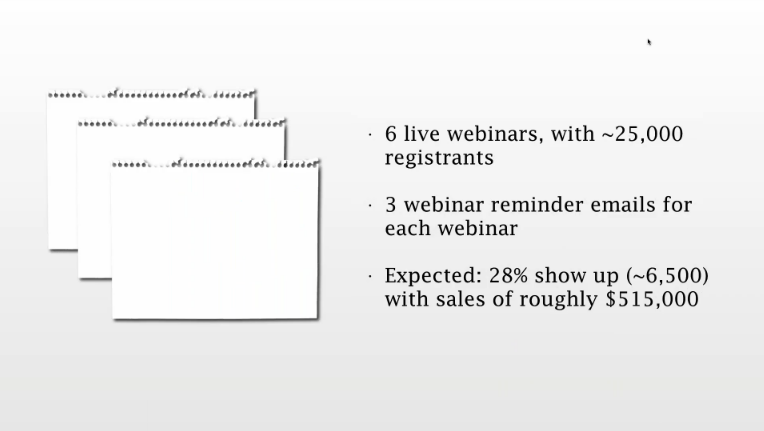
Joanna Wiebe more than tripled Wistia’s trial to paid user conversion rate after rewriting their sales email sequence of 8 emails:
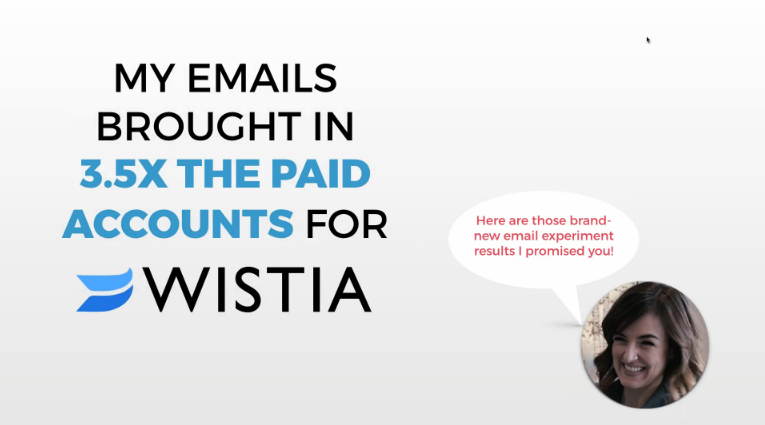
If you don’t have a big email list yet, hop over to my article explaining how I grew my email list by 3X in 3 months.
If you’ve already have a lot of peeps who invited your emails to their inbox, congrats! You can skip right over to the next step: using a nurture sequence to all of your current and future subscribers to covert them to paying customers on autopilot. The fancy term for it is lead nurturing.
How? By writing a few sales sequence emails, setting them up in your email marketing platform and sending them on a preset schedule.
You do need the right sales productivity tools to schedule these emails and make sure they show up in your email subscribers inboxes at the right time.
And you do need to figure out what to say in these emails!
Of course the stuff you say in these emails matter. Which is why the rest of this article exists. Let’s get started!
If you’d like to jump to a specific section be my guest use the table of contents or just read along like you normally would! It’s a good read.
The structure of a compelling sales email
First, let’s walk through how to write a compelling sales sequence email.
Before we talk about calls to action, there is one piece of advice you need to implement. You want to make sure your subscriber remembers you, you want your “from” email address to be verified using DMARC policy. In other words if they subscribed to your blog on criminallyprolific.com, you need to email them from name @ criminallyprolific.com email address which is verified through DMARC. This will increase the chance of them actually seeing the email in their inbox by 10X. Unverified emails go straight to junk.
A. Start by deciding which action you want your subscriber to take after reading your email.
The first part is think about who is your target audience and how did they get on to your email list.
Personalization of emails is one the best ways to get high response rates.
Your job is to personalize your outreach as much as possible based on what you know about them, such as:
- Was it through some marketing automation campaign?
- A webinar you ran?
- Personalized emails you sent through cold email outreach campaign?
- Is anyone on the list an existing customer or repeat customers?
- Have they already received a sales pitch from a salesperson or a sales rep on your team?
- Are they receiving multiple sequences or another engagement sequence?
- Have they already received onboarding emails or welcome emails?
- Have they received any automated emails or any previous emails from your app or product?
Next part is what do you want your subscriber to do? What is your sales funnel? What is the goal of your campaign? Do you want them to:
- click on a link?
- reply to your sales sequence email or conversion sequence?
- Sign up for your Saas product?
- Buy something?
- Respond to follow up emails?
- Schedule a meeting with you?
Write the call to action for that first so you have this goal in mind when writing the rest of your email.
Think about your overall marketing funnel: what do you want your subscriber to do, how would that get them to convert?
Remember if you are going to create a welcome sequence or an onboarding sequence of sales emails which would be sent to your subscriber after they subscribe to your blog through a drip campaign. You want your subscriber to take a specific action.
For example: If the action you want your subscriber to make is to book a call with you… well then you need to have a calendar link as your main CTA. Take a look at this example from Neil Patel, this is what he has on all his blog posts as well as email sequences:

There are a ton of calendar tools out there to help you create a calendar link for someone to schedule a meeting with you, I recently tested 45 calendar ones and compiled my list of the top 7 in this post on calendly alternatives.
Actions to ask your prospect to take can include:
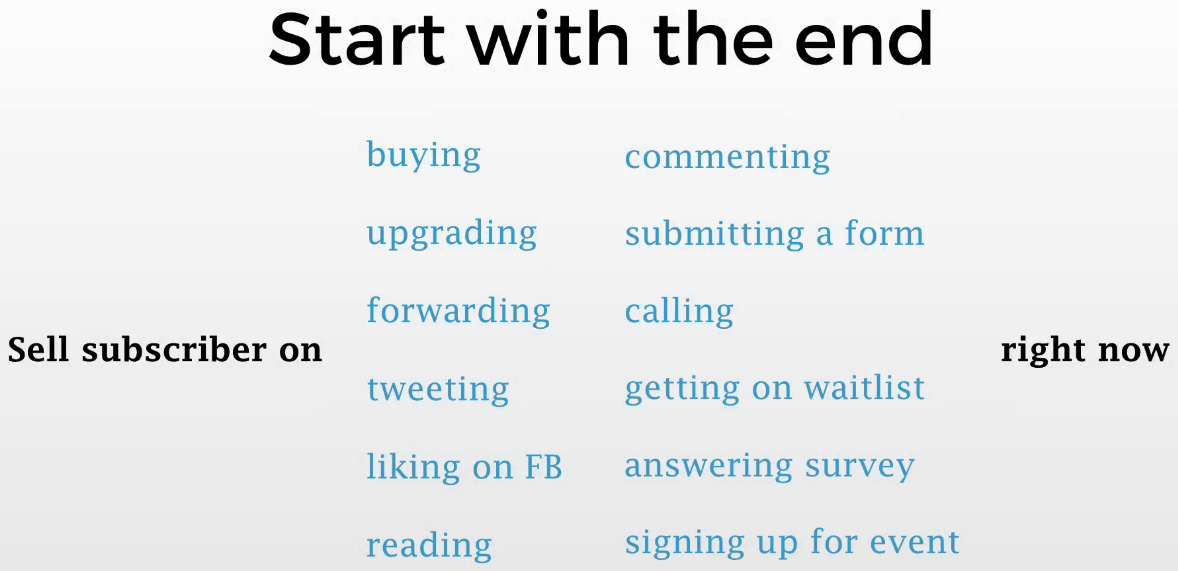
B. Use an irresistible hook to open your sales email sequence.
Our brains are wired to pay attention to what’s new and exciting and to ignore what we’ve already seen a hundred times before. So by saying something weird or funny or interesting in your sales sequence email’s opening lines, you compel subscribers to sit up and pay attention.
Here’s how James Kemp opened one of his emails. With a personal story:
Yesterday I went on a school trip.
My 5 year old son and 36 other little people escorted by 7 adults. Me and 6 Mums. As predicted I was the only Dad. Apparently Dads are less likely to take time off work for school trips despite the fact that most of the Mums took time off work for a school trip….
I digress.
We looked at animals.
Bunnies, sheep, goats, birds, butterflies and an 800kg crocodile called Scar.
Can you guess where the email eventually leads to? At the end, his emails makes the connection between his opening story and how to making a killing in ecommerce businesses. 🙂
Another opening hook example:
Here’s how Joanna from Copy Hackers opened her sales sequence email asking subscribers to join her Copywriter Mastermind. She is a master as sales copy and I love her work. Notice how it doesn’t mention what she’s selling at all in the beginning? Instead, she uses the story of Don Draper and his drinking as a set up for her punch in your face twist: nope, copywriters don’t drink to look cool. They drink to drown their self-doubt. A self-doubt her mastermind will vanquish.
Don Draper.
This is for you, you cunning trickster, you.
We used to be friends, Don.
At least to the degree that one can fall in love with a fictional antihero.
But then something changed.
You took your game of deceit a little too far.
And of all the cunning little tricks you played’¦
On American consumers’¦
On your family’¦
On yourself’¦.
None were as hurtful as the one you played on members of your own ilk.
Copywriters.
The men and women charged with alchemizing words into wealth’¦
Here are some ways you can compellingly open your sales email:
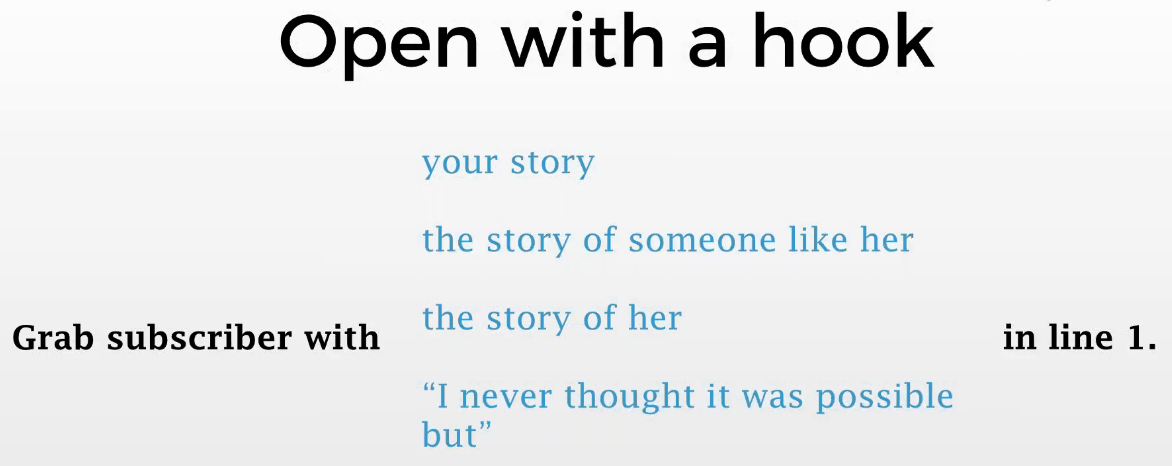
C. Write the body of your email, using a mix of different psychological principles to convince your audience why they should take the action you ask them to right now.
Psychological triggers include:
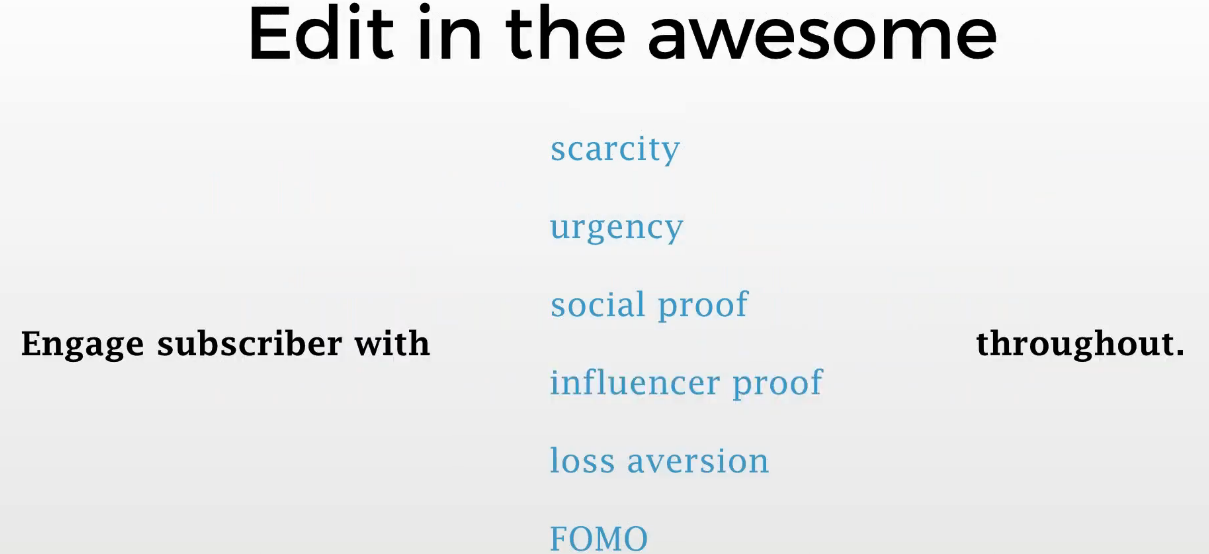
Here’s an example of highly effective sales email sequence where Misty uses urgency and FOMO to sell Ben’s course:
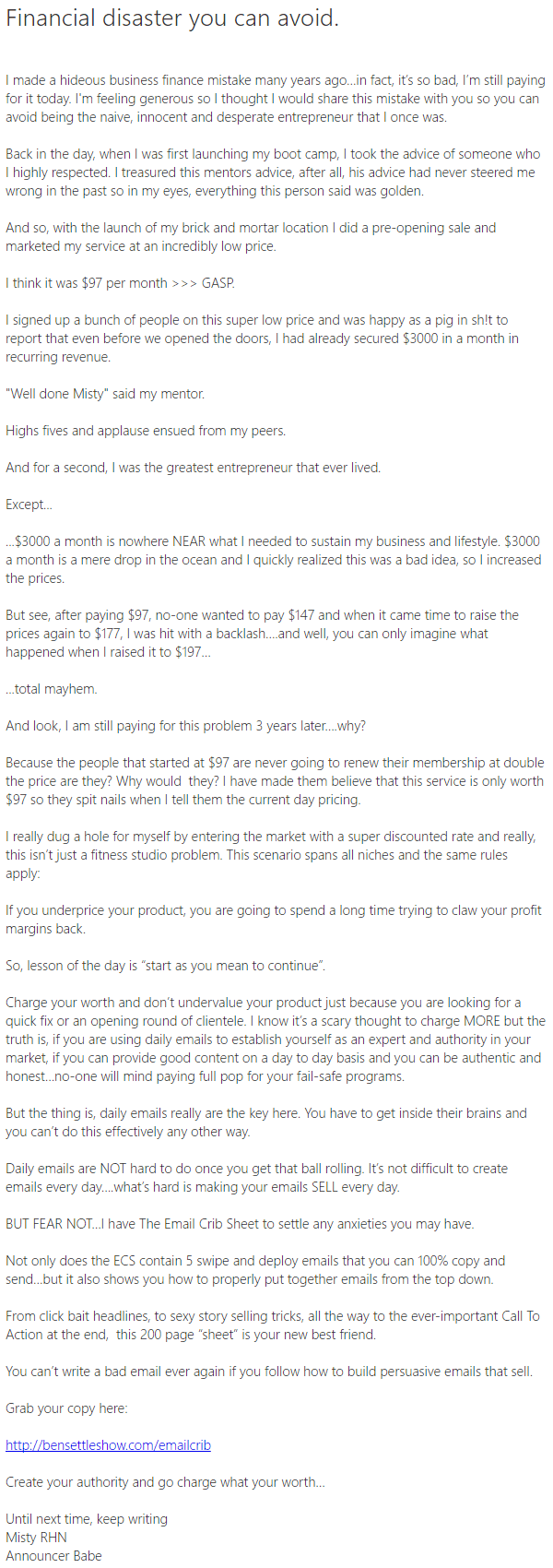
Important copy and style tips for writing high converting sales emails
A. Every new sentence should start on its own line.
Example:
I’m the founder of JustReachOut ‘” helping entrepreneurs forget PR firms and pitch press on their own.
I am a contributor for Entrepreneur, TheNextWeb and TechCrunch.
I’ve also written for Mashable, Huffington Post, WIRED and many others.
Why? According to a May 2016 Litmus study, 54% of recipients open emails on their mobile phones. So even by including as little as 2-3 sentences in a single block, it looks like a lot to read on a small screen.
B. Don’t use a call to action until your copy has made your audience ready for it.
Your copy has to educate, entertain and emotionally stir your prospects on the benefits of taking action before you can ask them to do it. Ask too early and you may get the reaction: “Why should I?” Then they may check out of your sales email entirely.
This means that in many cases if you want a high conversion rate, you should only place CTAs at the end of your emails. I would also use a conversion rate tool to measure and optimize the conversion so that you have data on which CTAs are converting better vs. others. Here’s an example of a recent sales email Joanna from Copy Hackers sent. She told a long story before asking readers to take action (click on a link) at the end:
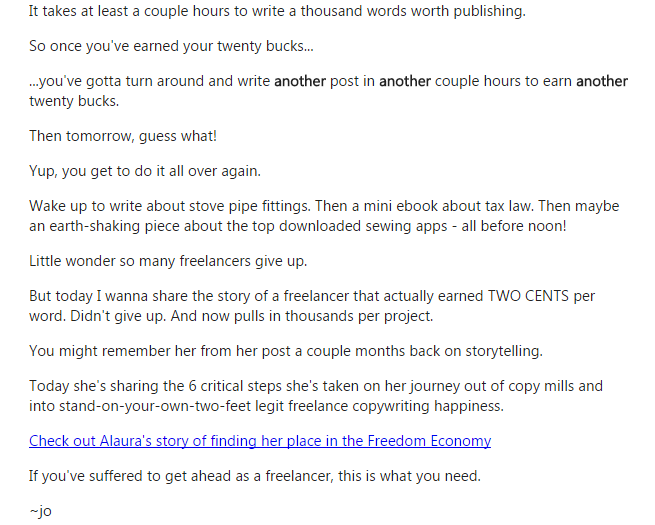
C. Don’t ask your audience questions they may answer no to.
When posing questions related to the value of your product or the importance of taking a specific action, make sure you only ask ones you can be confident most of your audience would say yes to. When in doubt, avoid phrasing your point as a question. When your audience mentally disagrees with something, they subconsciously become less receptive to everything you say afterwards.
Instead of saying: “Doesn’t it suck to forget a few important steps during product launch?”, you can rephrase it into a statement like: “When launching a product, it’s easy to forget a few important steps that come back to bite you later.”
Here’s an example of a sales email Ryan Levesque sent inviting his subscribes to a Q&A call with him. Notice how the only questions he asks are ones related to whether or not one can attend his call. He doesn’t ask any questions related to the value subscribers would get out of attending it.
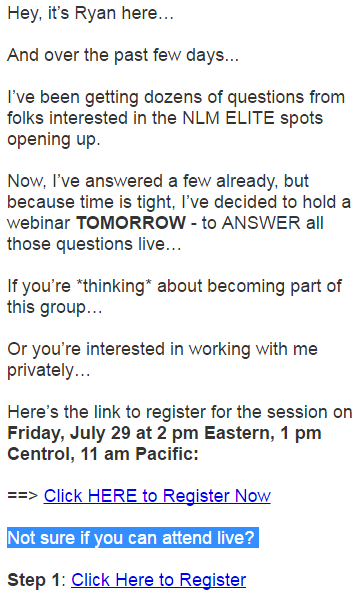
D. Don’t ask your audience to take more than one action in one sales email.
The paradox of choice. The more choices you give your audience, the less likely they are to take any action at all because now it’s that much more work for them to decide between all these options. Focusing on one action you want your subscriber to take will also make your copy that much more powerful because it won’t have to connect the dots between separate topics.
Here’s an example. See how Marie doesn’t ask subscribers to take any other action except watch her video and leave a comment?
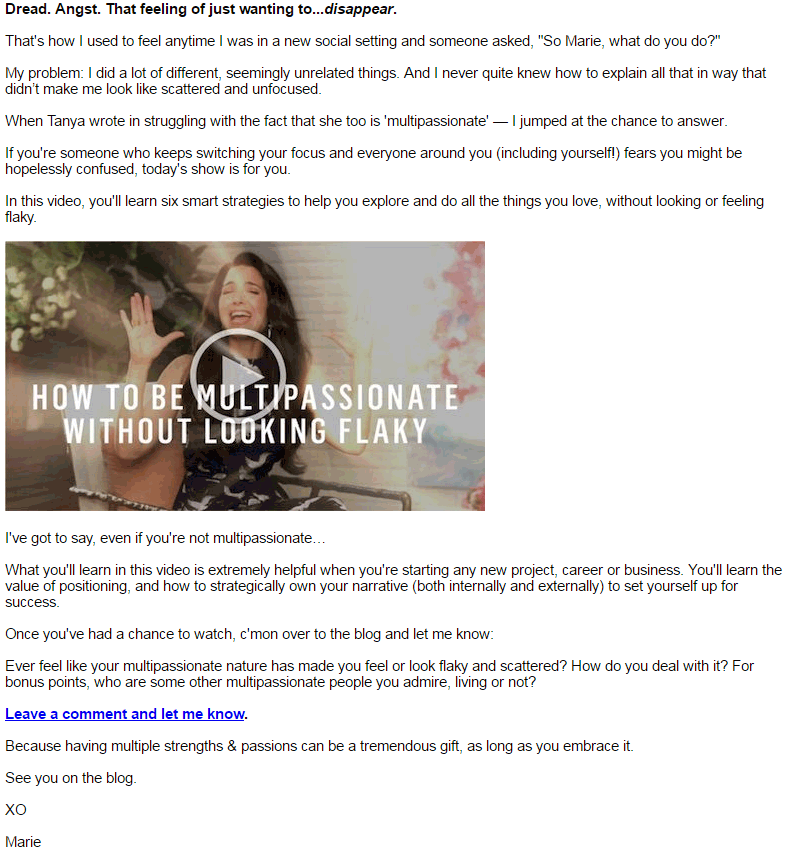
Pro tip: Check your triggered emails. Sometimes when you send out emails you setup something called triggered emails which are sent when a specific action occurs such as someone subscribed to your list by clicking over your website from social media. In that case the sales engagement platform sends out an automatic triggered email. You might forget about this triggered email and send your sales sequence in addition to it. This will confuse the recipient even more.
What to say in your first welcome sales email to new subscribers
A. If you sell content based products (example: courses, masterminds, etc.)
Your welcome should should include:
- Welcome your subscribers to the community
- Get them excited about the type of content they can expect from you in the future
- If you cover diferrent topics, you can ask your new subscribers which one they’re most interested in
For example, if your site focuses on digital marketing, you can ask your subscribers to click on the topic they’re most interested in receiving:
- SEO
- Content marketing
- Facebook ads
In your email marketing platform, set up a rule so that depending on which link a subscriber clicks inside this email, they’re automatically added to a new list.
For example, if they click on SEO, they can be automatically added to a list called ‘Subscribers interested in SEO’. Then in the future, if you plan to send a sales mail about SEO, you can send it only to that list instead of the general list containing all your readers.
This keeps the content you sent out interesting for all different types of subscribers so they keep opening and reading your future emails. This gives you more chances to gain their trust in your product value.
Here’s another example showing how Brian Dean asks new subscribers to click on the topic they’re most interested in in his welcome email:
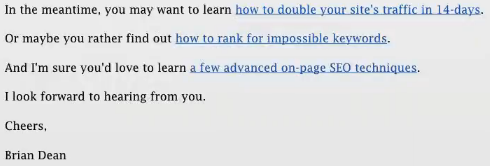
B. If you sell a SaaS product
Your welcome sales email should include:
– Thank new users for trying your product
– Ask them why they decided to give your product a try
This way you can get valuable feedback about the problems your users are trying to solve and the goals they want to achieve related to your product. So you know which product features you should spend more time developing and how to better frame your product value to future users.
Make sure your welcome email is written as a really personal message from the founder of the company. This way, it’s easier for new users to connect with and trust your company, knowing there’s good people working behind the scenes.
This is how Stuart McKeown welcomes new users to his tool Gleam:
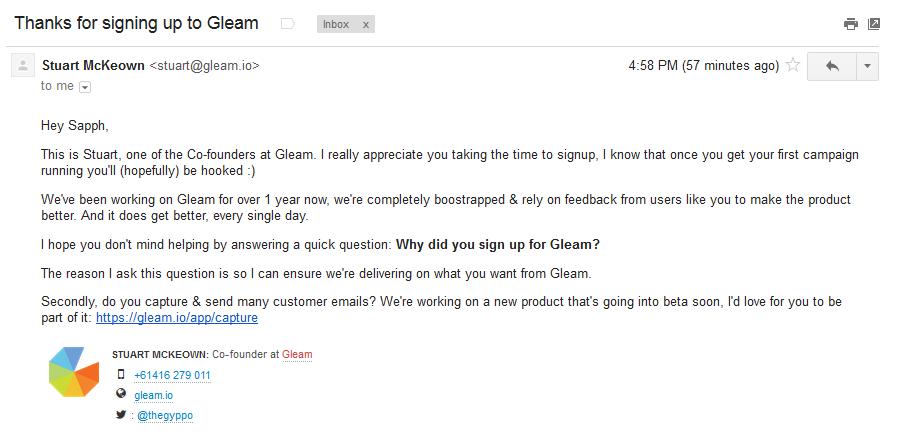
Creating a series of sales emails to put into an automated sequence
When launching a product to existing subscribers or nurturing new subscribers to buy your existing products, you can send a series of emails to convince them to eventually buy. This is much more effective than simply asking for the sale within a single point of contact since you get several chances to explain your product’s benefits, to address prospect objections and to share success stories.
To create compelling sales sequence emails, think about what type of customers gravitate toward your product.
Example of customer personas:
- Would they a skeptic (will your product work for me)?
- Would they be a number cruncher (how will your product help me save money or make money)?
- Would they be a dreamer (how will your product help me achieve my aspirational lifestyle)?
Then consider the thought process these customers typically go through before deciding to buy your product. In each email in your sales sequence, focus on addressing a specific thought or objection your prospect would likely have.
For example, let’s say you sell emails tracking tool and your customer persona is skeptic.
A sales sequence that addresses prospects’ thought process could look like:
A. Prospect thought: I have no clue what’s happening to my emails after I click send. Did the other person read it? Did the other person click on any of its links?
Email #1: Talk about how easily and effectively your product solves these problems.
For example: Never wonder again what’s happening on the other side. See exactly when your prospect opened your email, where they did and how many times they did. Like you’re looking over their shoulders!
B. Prospect thought: Finally, I know if my emails are being read and how many times they’ve been read. But what do I do with this info?
Email #2: Provide specific examples showing how they can use your product to achieve their goals.
Let’s look at an example: Saw that someone opened your email a few times but never responded? Chances are they were interested in what you had to say but got too busy to reply. You can send a short follow up email to get back on their radar.
C. Prospect thought: Ok cool, but does this actually make my life significantly easier?
Email #3: Describe a few of the biggest time saving headache reducing benefits the prospect will get from using your product.
Example: With email tracking, you’ll be able to see what subject lines and email content consistently get opens and replies. Then you can turn those into proven templates to use again and again.
D. Prospect thought: Yeah but why should I buy right now?
Email #4: Provide an incentive for your prospect to buy right now.
Example: By upgrading today, you get 10% off our yearly plans. And one of our copywriters will help you rewrite a few of the emails you send often to get more opens and replies!
This is an example of how you can plan out your prospect thought process to write your sales sequence emails:
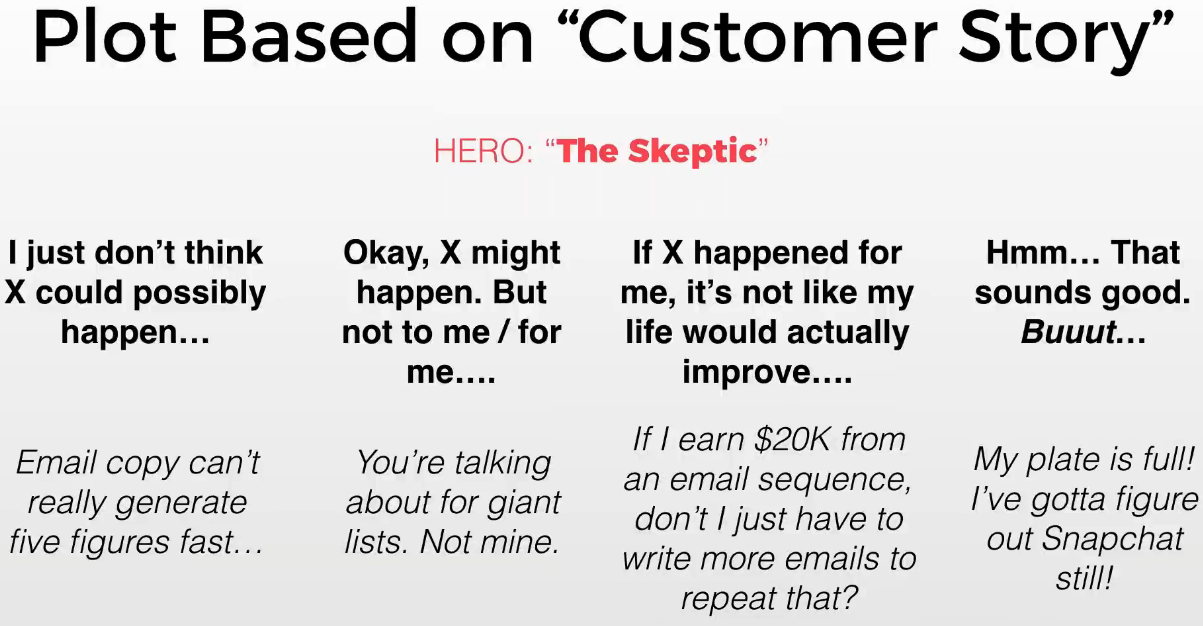
Here’s the full sales sequence emails cycle Bryan Harris of Videofruit sent me about his “$10 000 in 24 hours” course:
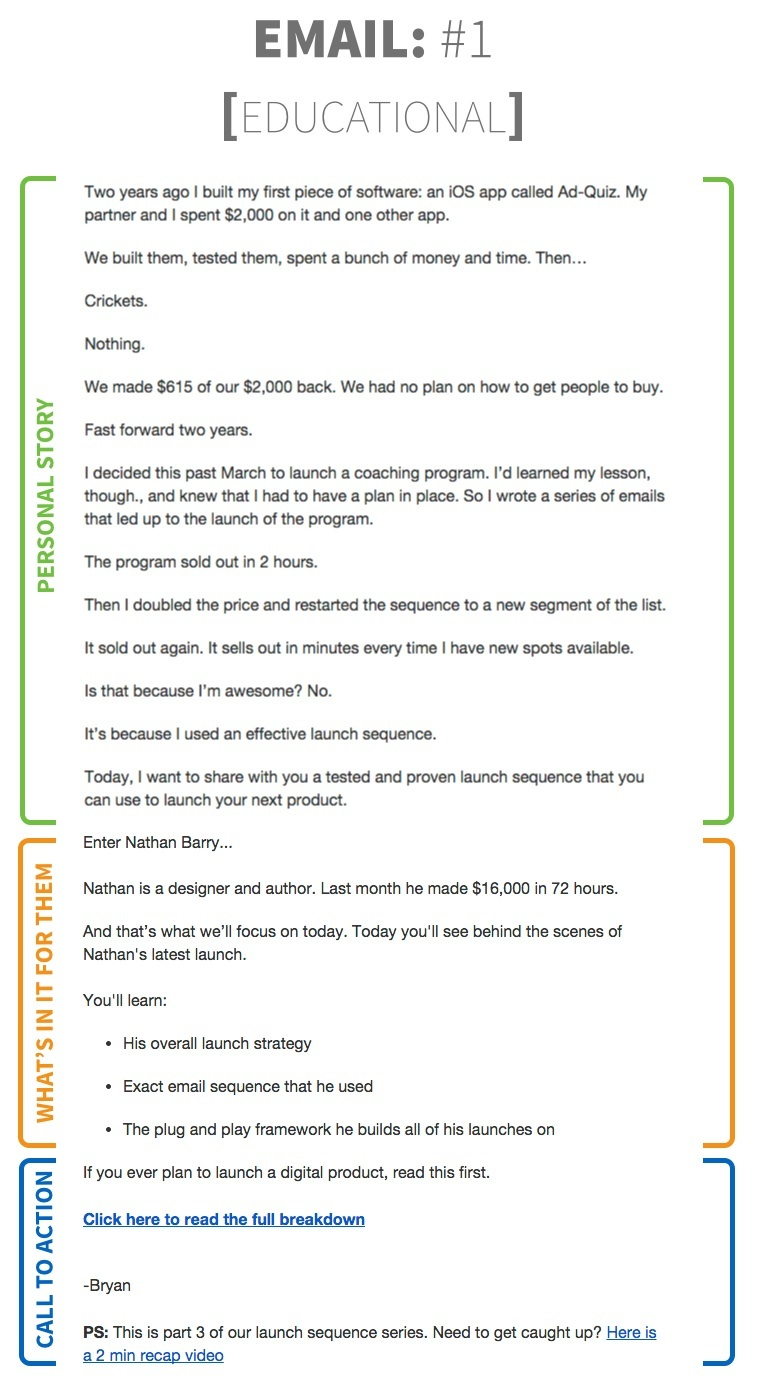
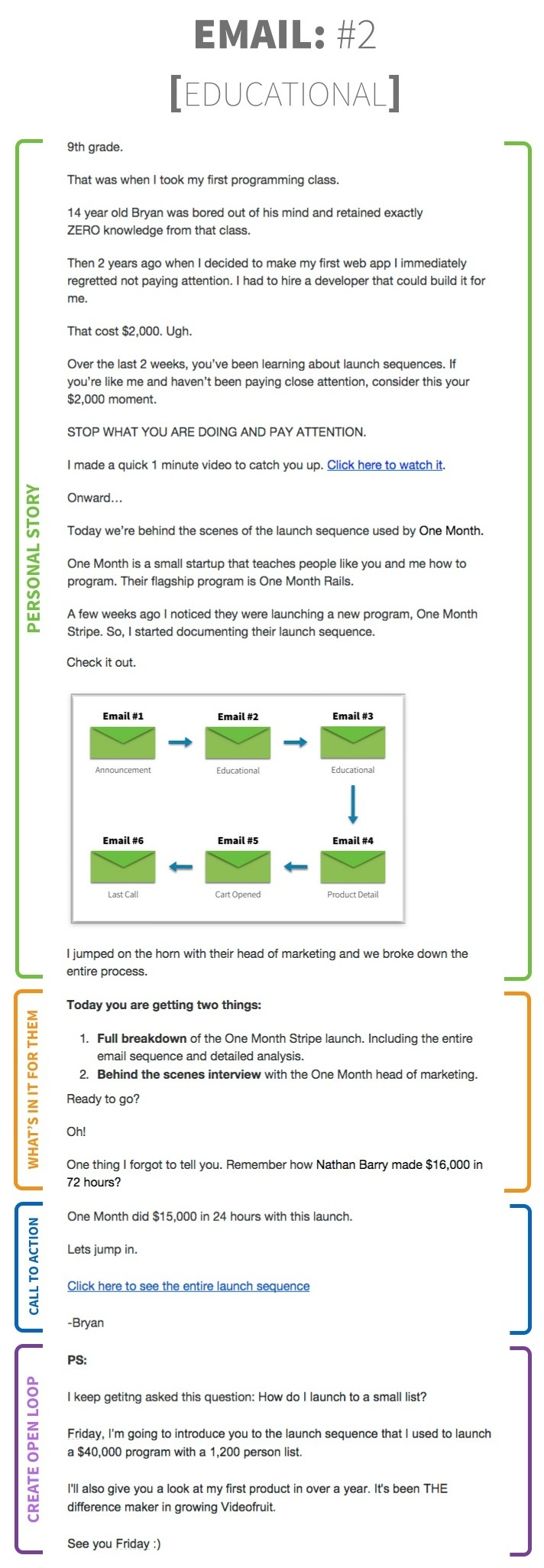
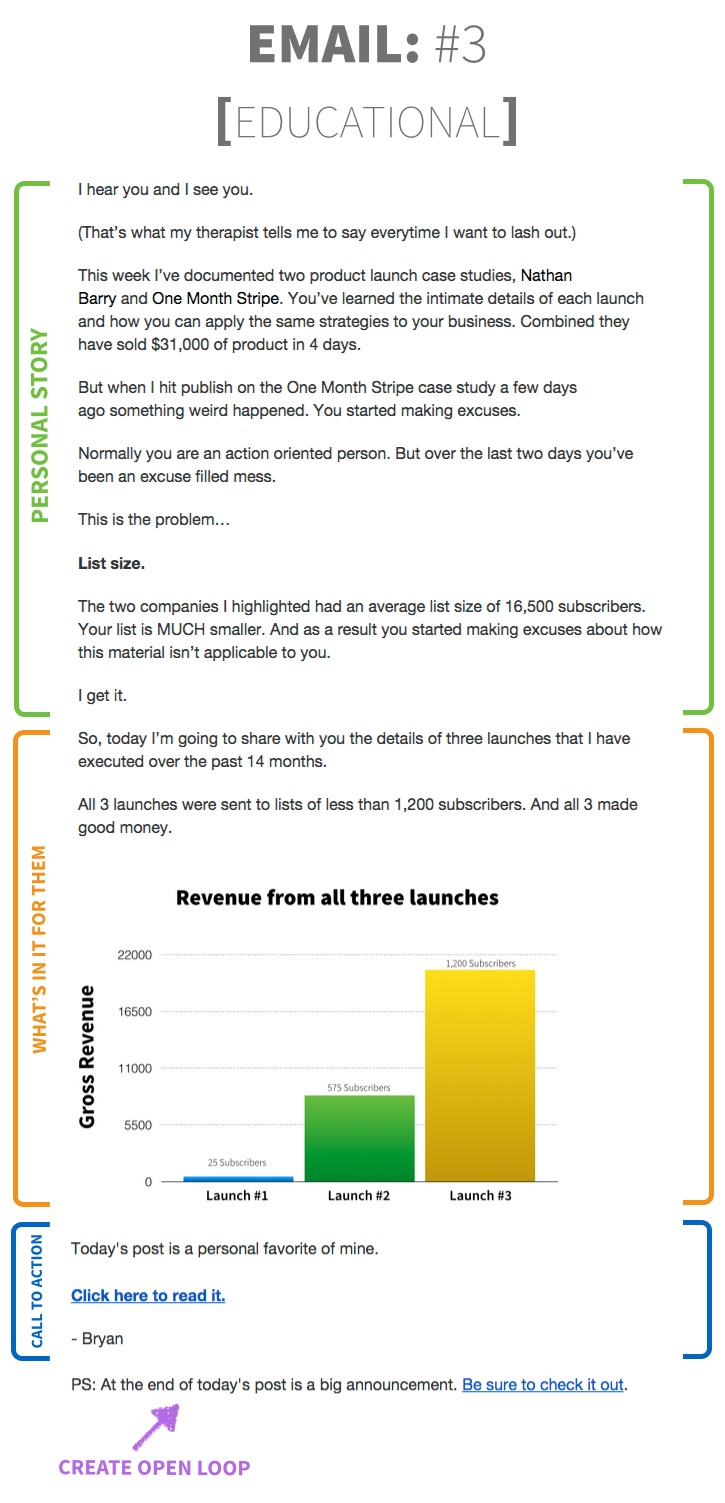
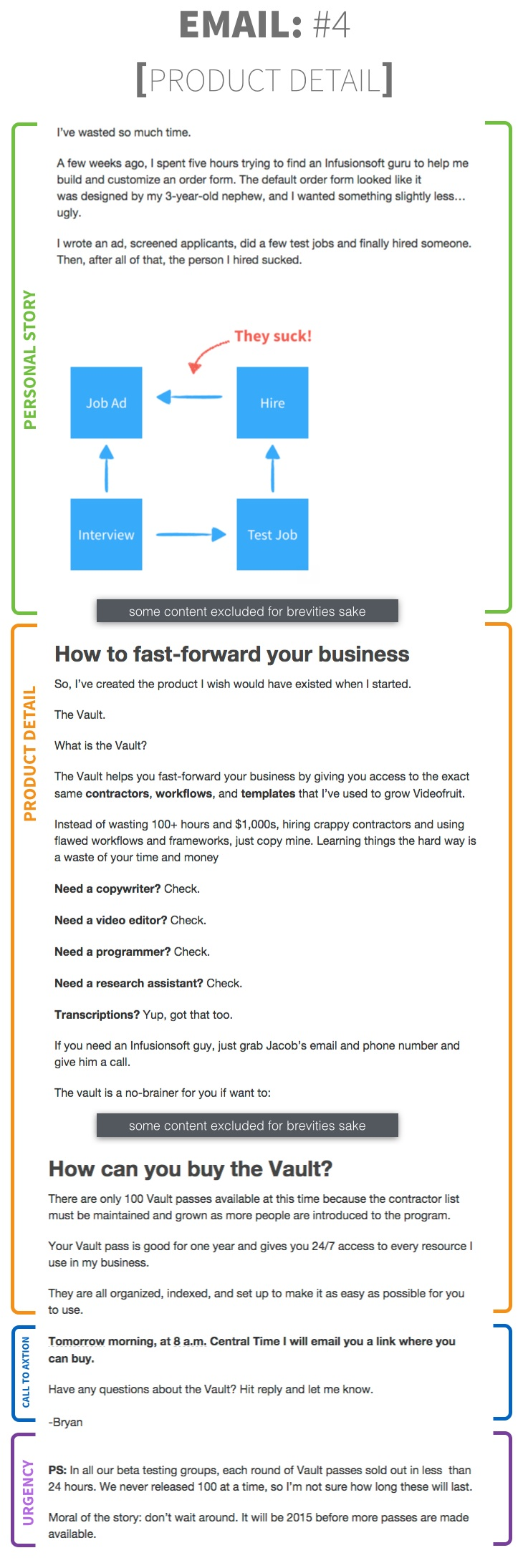
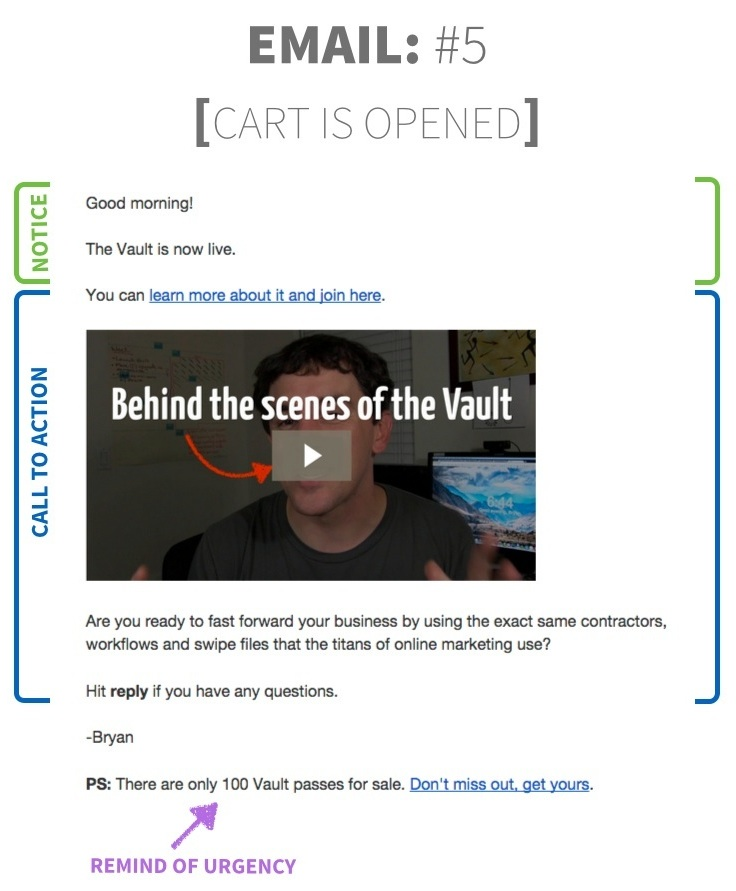
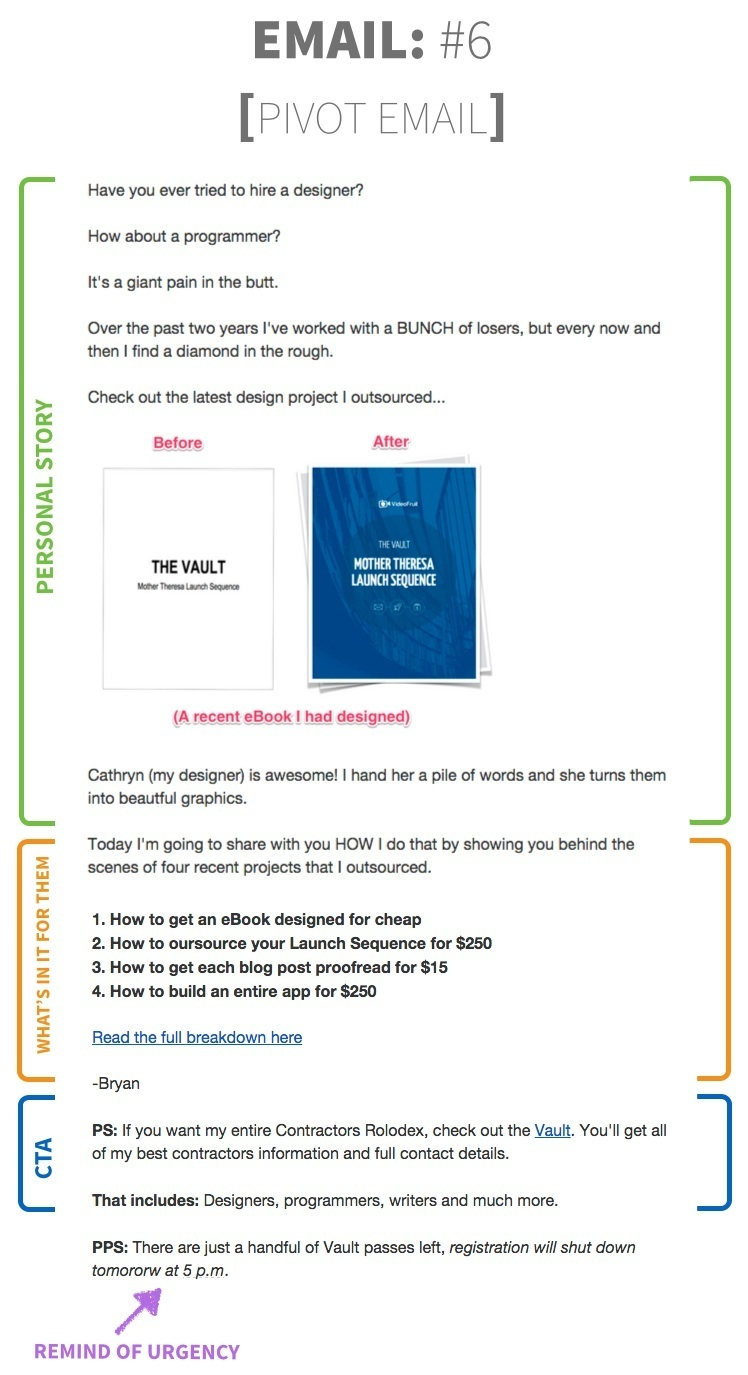
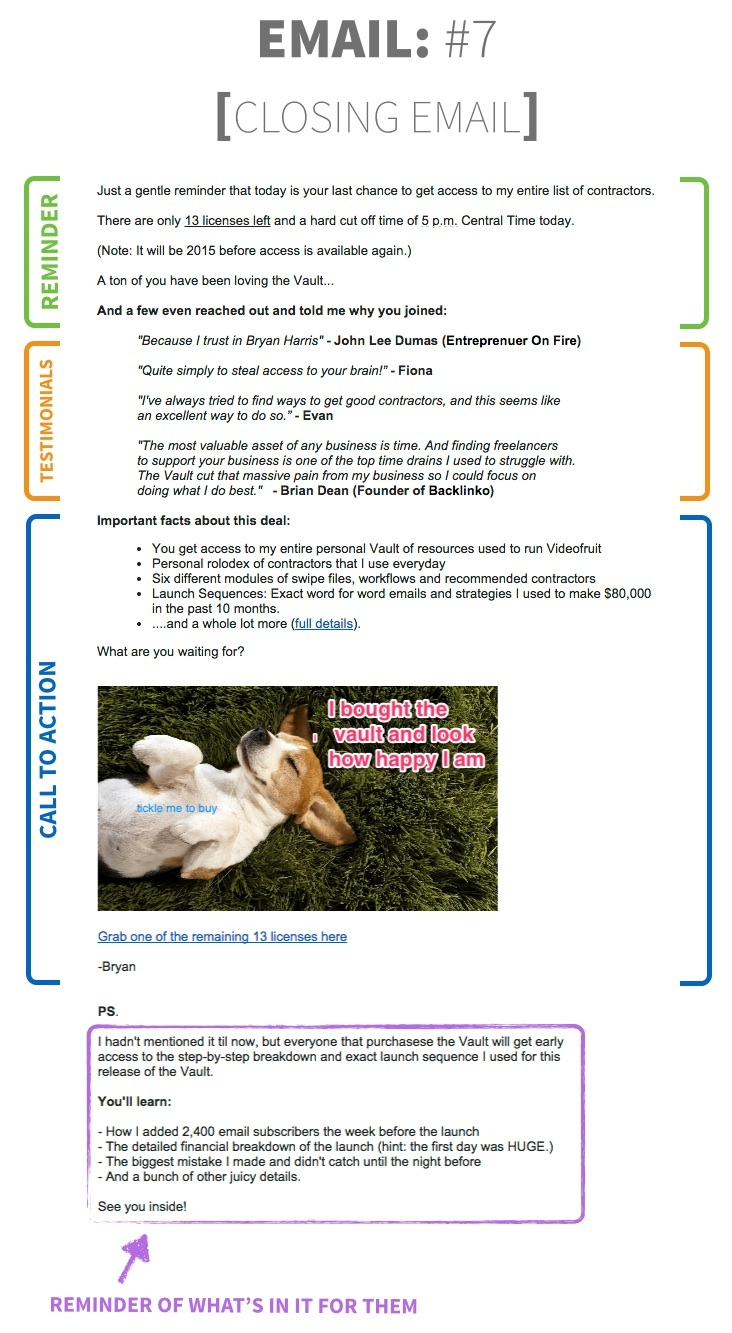
Final thoughts
You don’t need to be the next Hemingway to write high converting sales emails. You can get solid results by simply learning from other copywriters who have already written hundreds of them and take inspiration from the subject lines, styles and structures that worked best.
To get started, use proven sales sequence email frameworks like the ones I provided above and plug your personalized content into them. After doing this for a while, you will internalize the basics to be able to write something new and exciting for your audience completely from scratch.
What’s great about learning email copywriting as a skill is, you can deploy again and again to generate sales. The lifeblood of any business. And the psychological principles behind copywriting can be applied to all forms of communication. So expect to be hearing a lot more yes in all facets of your life!
thanks for the real life examples. still find it hard to create one from scratch myself. will study these more. thank u
start from the very top of the article – who are your audience? what are their paint points?
That example from Bryan Harris- man, that’s a monster! I feel like these sequences are such overkill sometimes.
Yes and no, it really depends on what you’re trying to do. Bryan Harris was building a relationship with his prospects to establish trust. So he needed all those emails to do that.
when it comes to simple sales emails….brian dean emails are super simple and he only send two of them I think, it’s not a long sequence.. maybe three.
Personalization is key in these emails… it’s funny, the tiniest change in subject line or in first sentence which has some personal details about a prospect makes a huge change
100%!
The worst is just like what you said in article – when you have your former customers or partners on the target list without realizing it. You feel so bad when they email you back.Or you have other drip campaigns running or customer service or sales rep already emailed them somehow and then you email them as well. Cleaning target lists should be something you spend a lot of time on.
well said! I have run into this many times myself. To this date I get hit up with cold sales emails from friends and partners and when I respond to them to ask them to take me off the list – they feel embarrassed.
I wonder how well these work for ecommerce selling vs. courses and digital products/software.